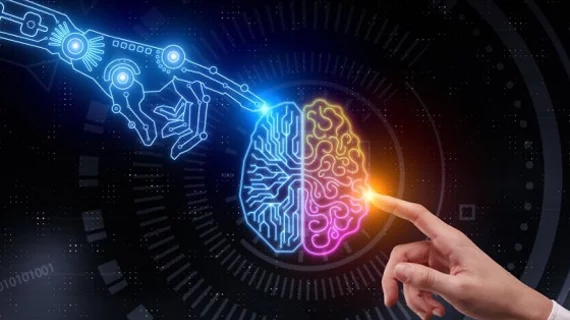EKGs may soon screen for cardiomyopathy, thanks to AI
An AI-based approach to diagnostics could see electrocardiograms (EKGs) repurposed to screen for hypertrophic cardiomyopathy in the not-so-distant future.
Mayo Clinic researchers reported in the Journal of the American College of Cardiology this month that they were able to train a convolutional neural network (CNN) to detect characteristics of hypertrophic cardiomyopathy that would have otherwise gone unseen by a physician. The approach retools the standard 12-lead EKG to act as a second pair of eyes in detecting the illness, which is thought to be underdiagnosed due to a lack of outward symptoms.
Senior author and Mayo Clinic cardiologist Peter Noseworthy, MD, co-first author Konstantinos Siontis, MD, and colleagues trained and validated a CNN using digital 12-lead EKG data from 2,448 patients known to have hypertrophic cardiomyopathy and 51,153 age- and sex-matched patients without the condition. They then tested the performance of the algorithm in a separate subset of 612 patients with hypertrophic cardiomyopathy and 12,788 controls.
The AI’s ability to differentiate patients with hypertrophic cardiomyopathy from those without it resulted in an area under the curve (AUC) of 0.96, the authors reported. Where an AUC of 0.5 is considered poor and an AUC of 1.0 is excellent, the result was good news.
“The good performance in patients with a normal EKG is fascinating,” Noseworthy said in a release. “It’s interesting to see that even a normal EKG can look abnormal to a convolutional neural network. This supports the concept that these networks find patterns that are hiding in plain sight.”
Subgroup testing revealed further successes; the AUC for predicting hypertrophic cardiomyopathy in people with concomitant left ventricular hypertrophy was 0.95, and the AUC in a subgroup of patients with only normal EKGs was also 0.95. The AUC for a subgroup of patients diagnosed with aortic stenosis was 0.94.
“The subgroups are important for understanding how to apply the test,” Siontis, a resident cardiologist at Mayo Clinic, said in the release. “It’s good to see that the AI performs well when the EKG is normal as well as when it is abnormal due to left ventricular hypertrophy. Perhaps even more important is the fact that the algorithm performed best in the younger subset of patients in our study (under 40 years old), which highlights its potential value in screening younger adults.”
Still, Siontis said a lot of work still needs to be done, including testing the AI in other populations and ages.
“This is a promising proof-of-concept, but I would caution that, despite its powerful performance, any screening test for a relatively uncommon condition is destined to have high false positive rates and low positive predictive value in a general population,” he said. “We still need to better understand which particular populations will benefit from this test as a screening tool.”

